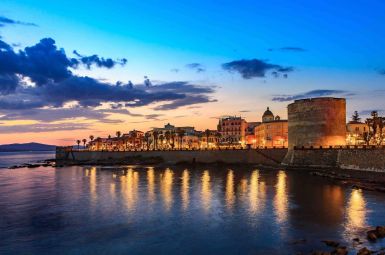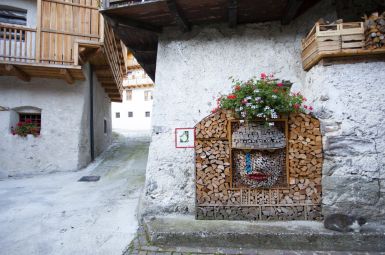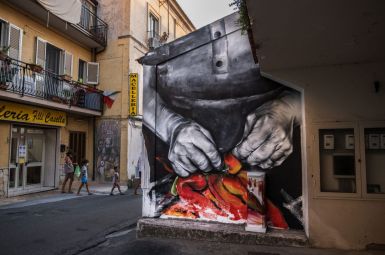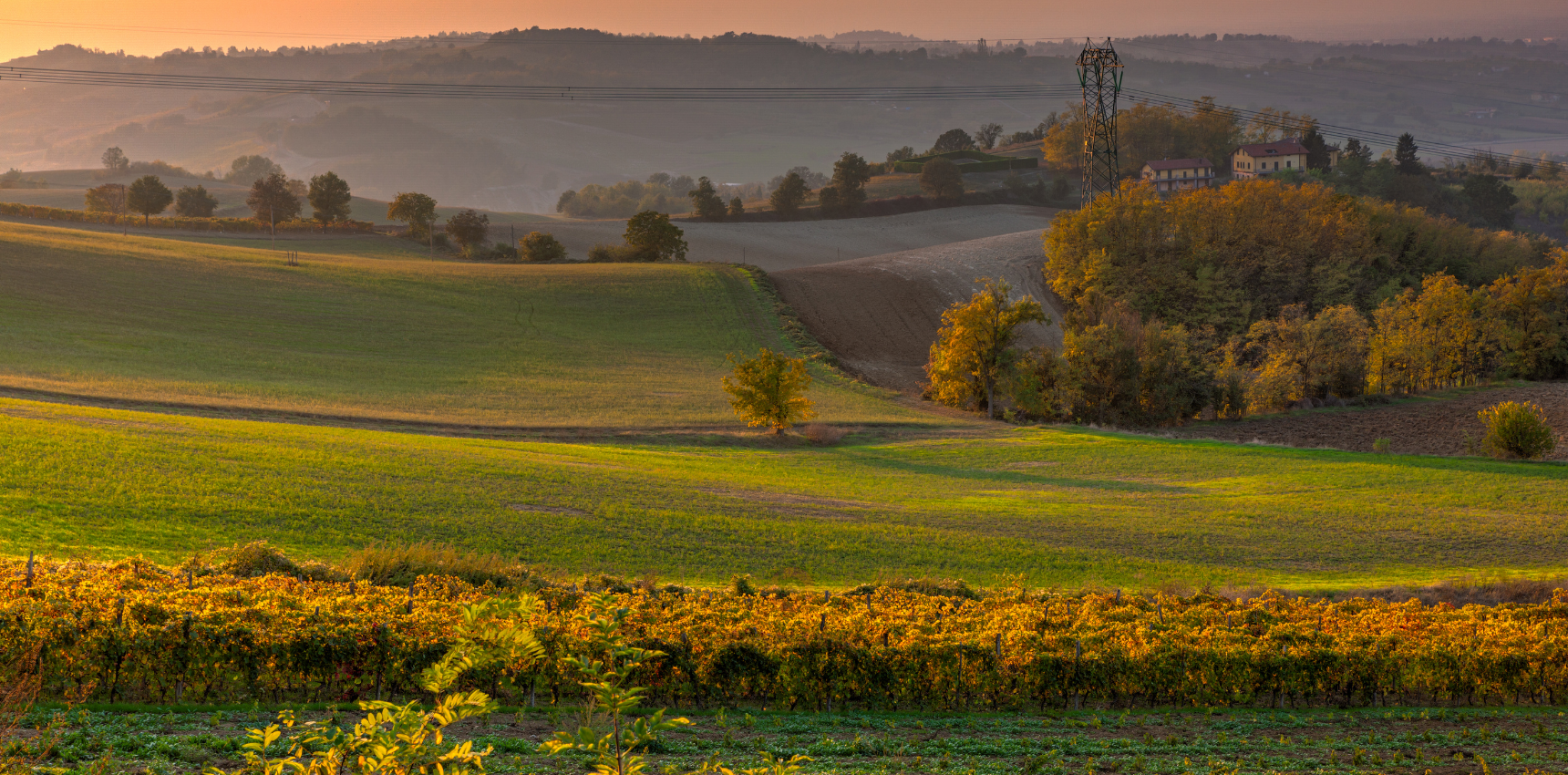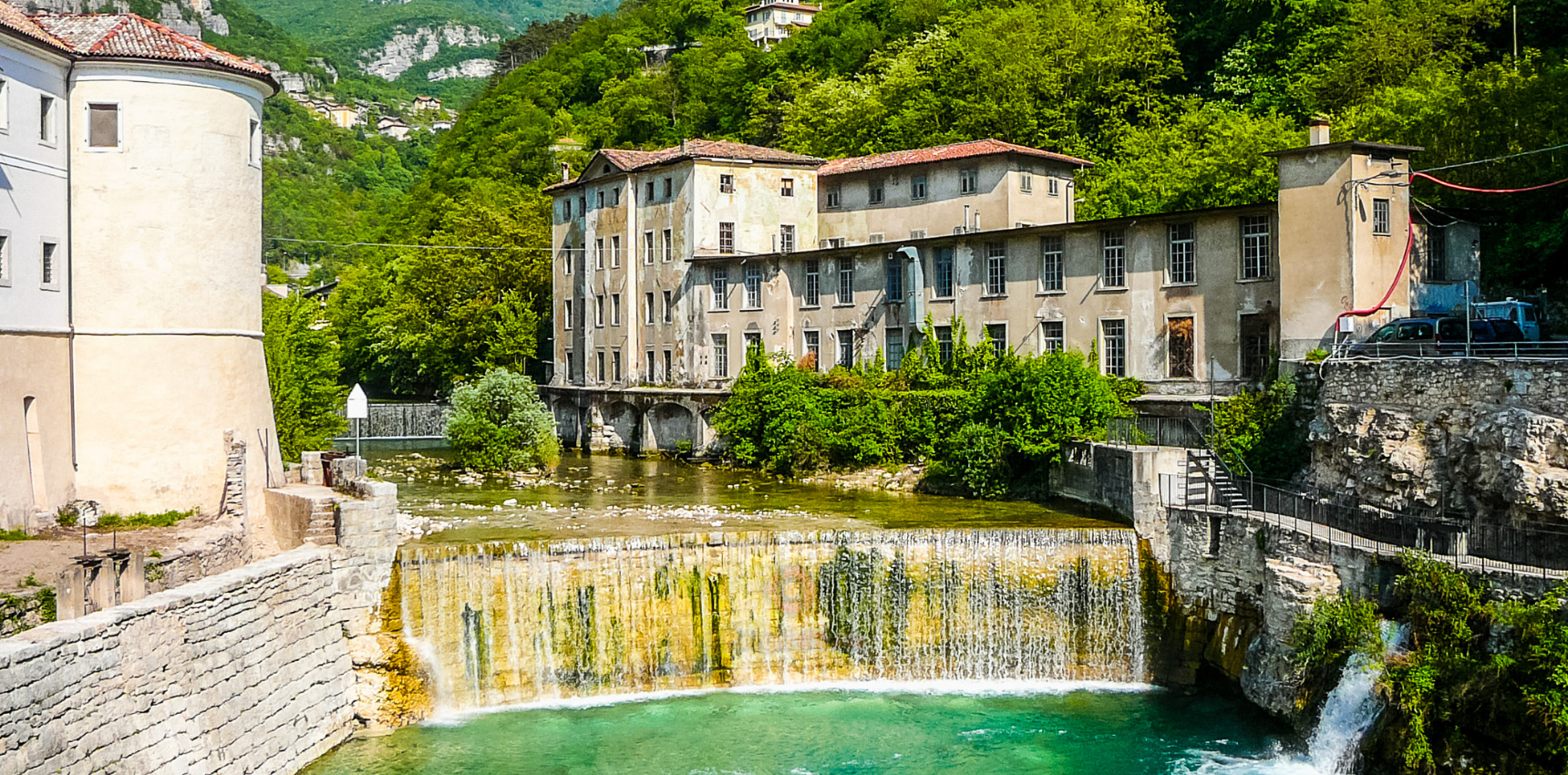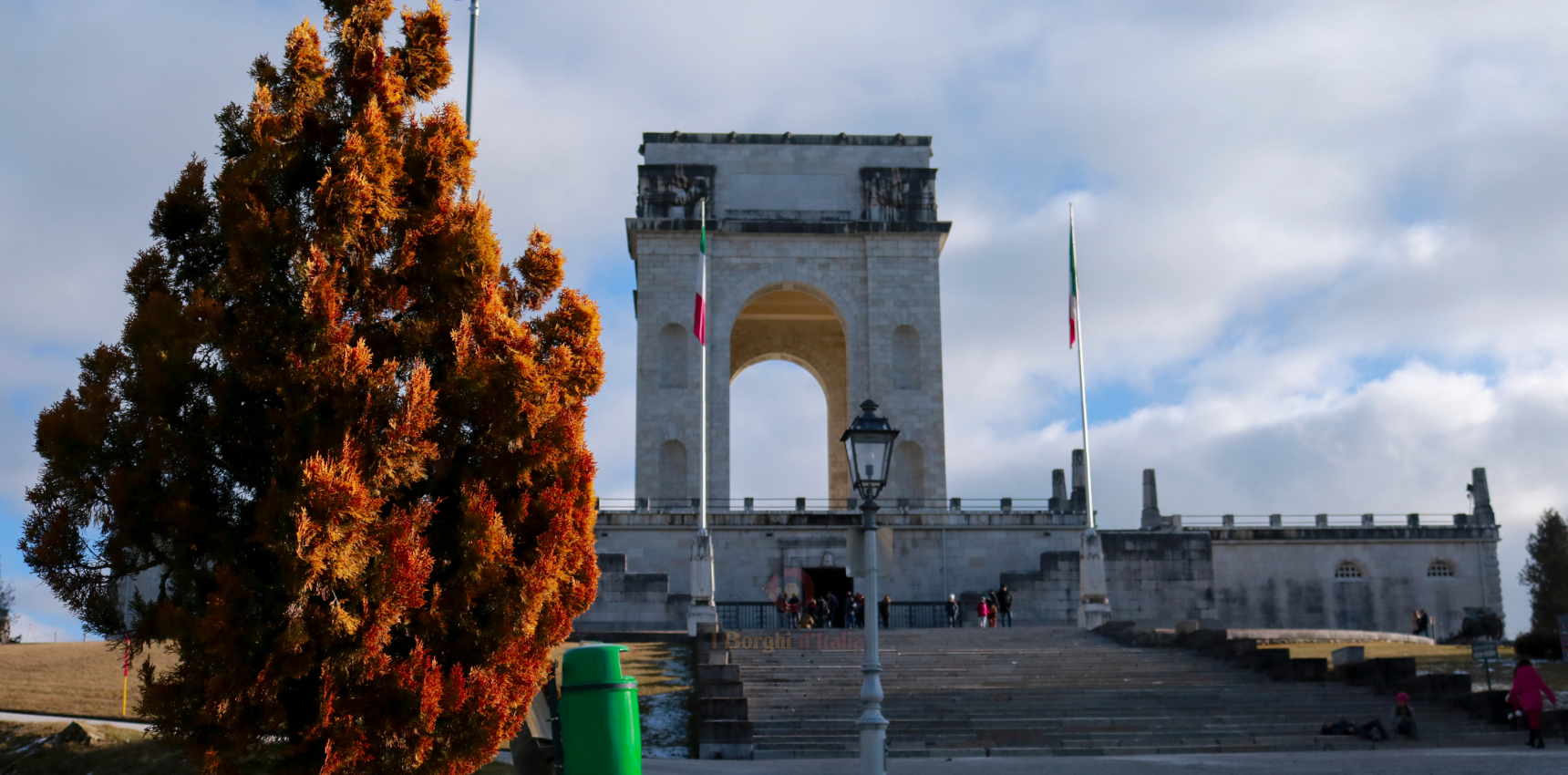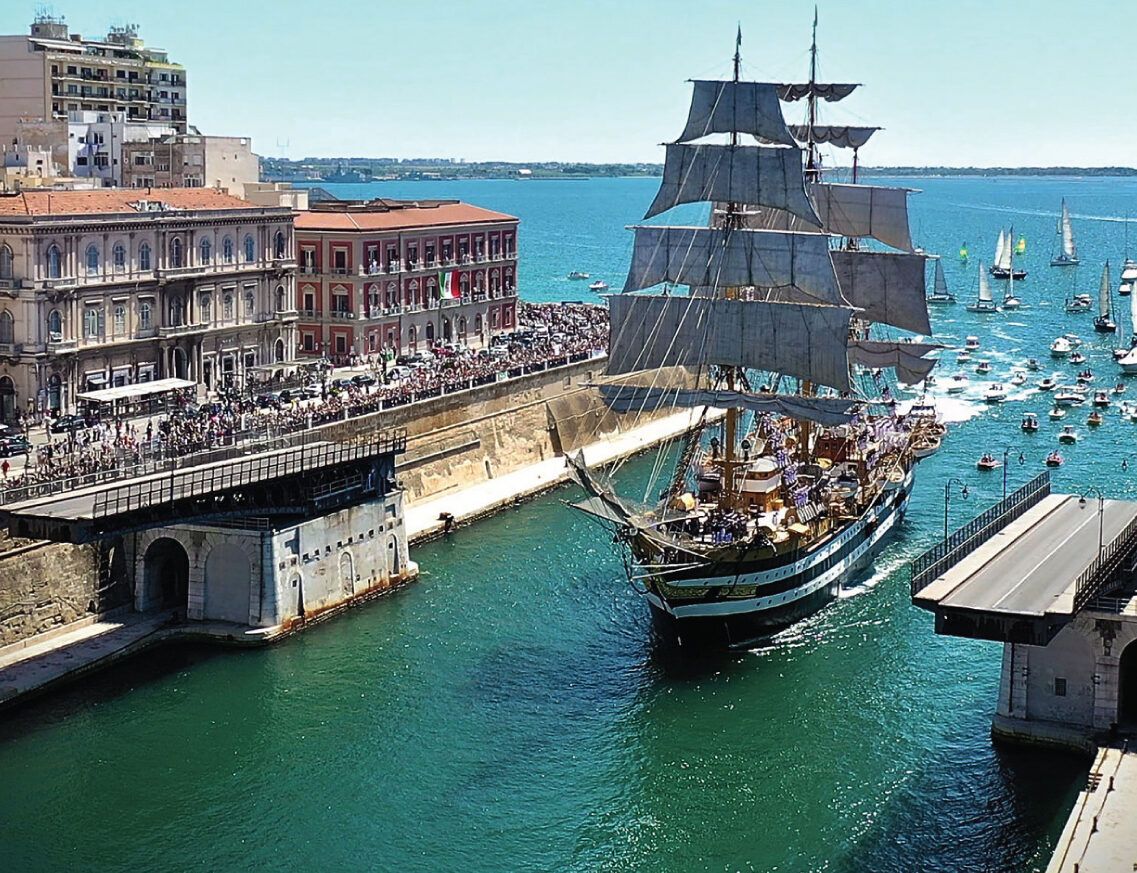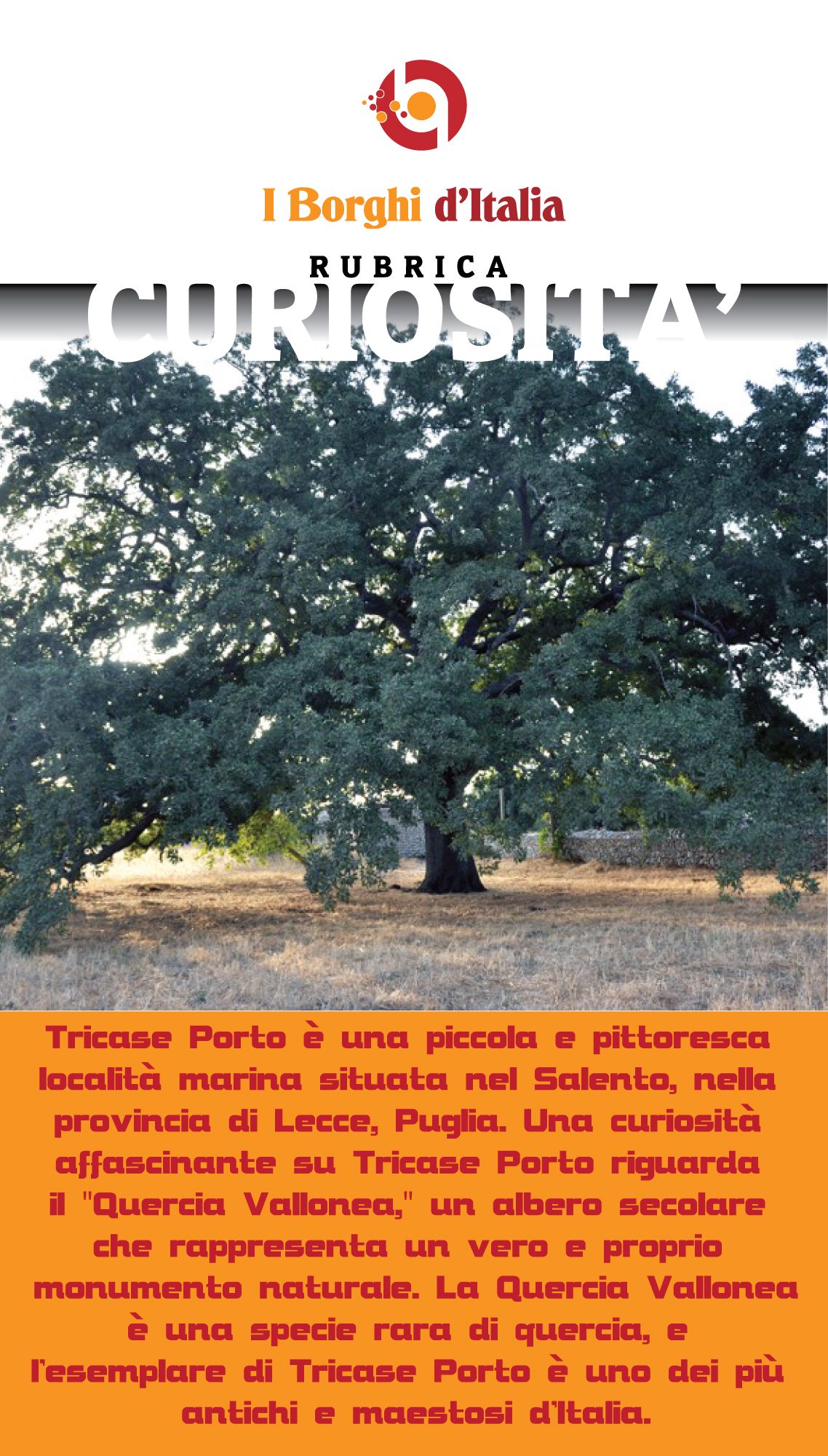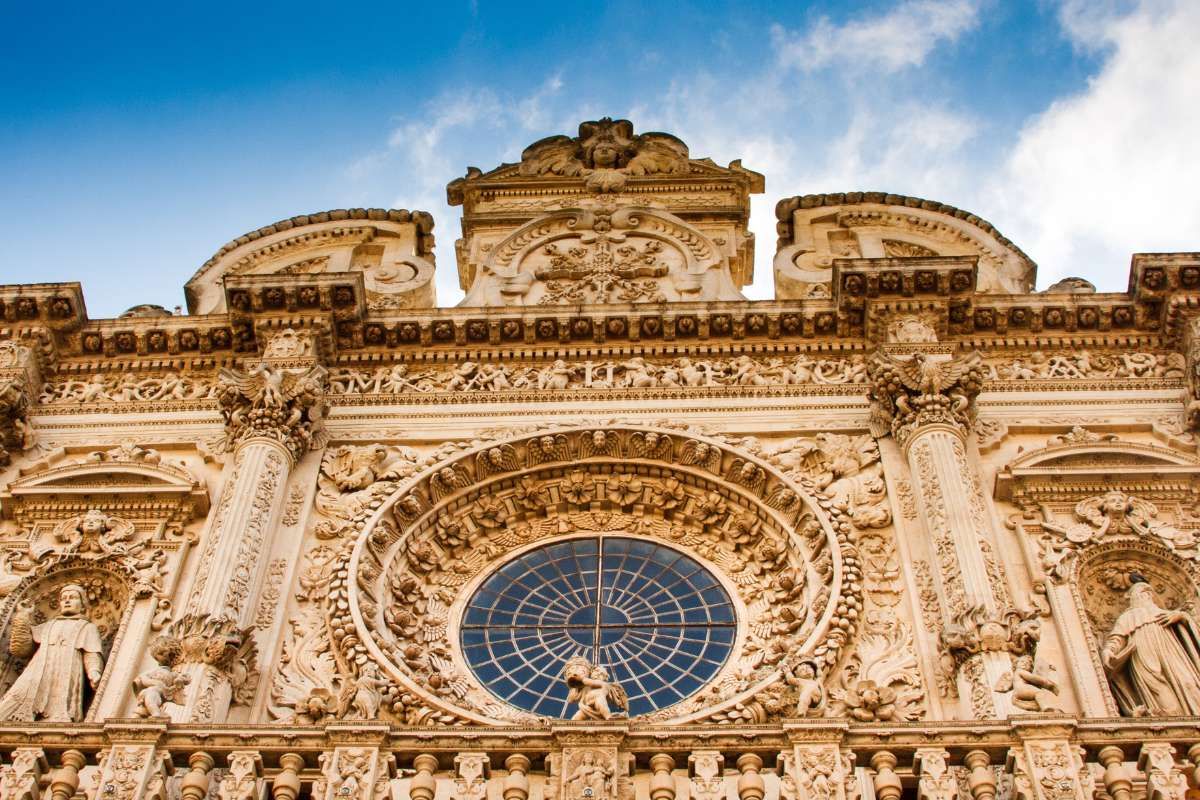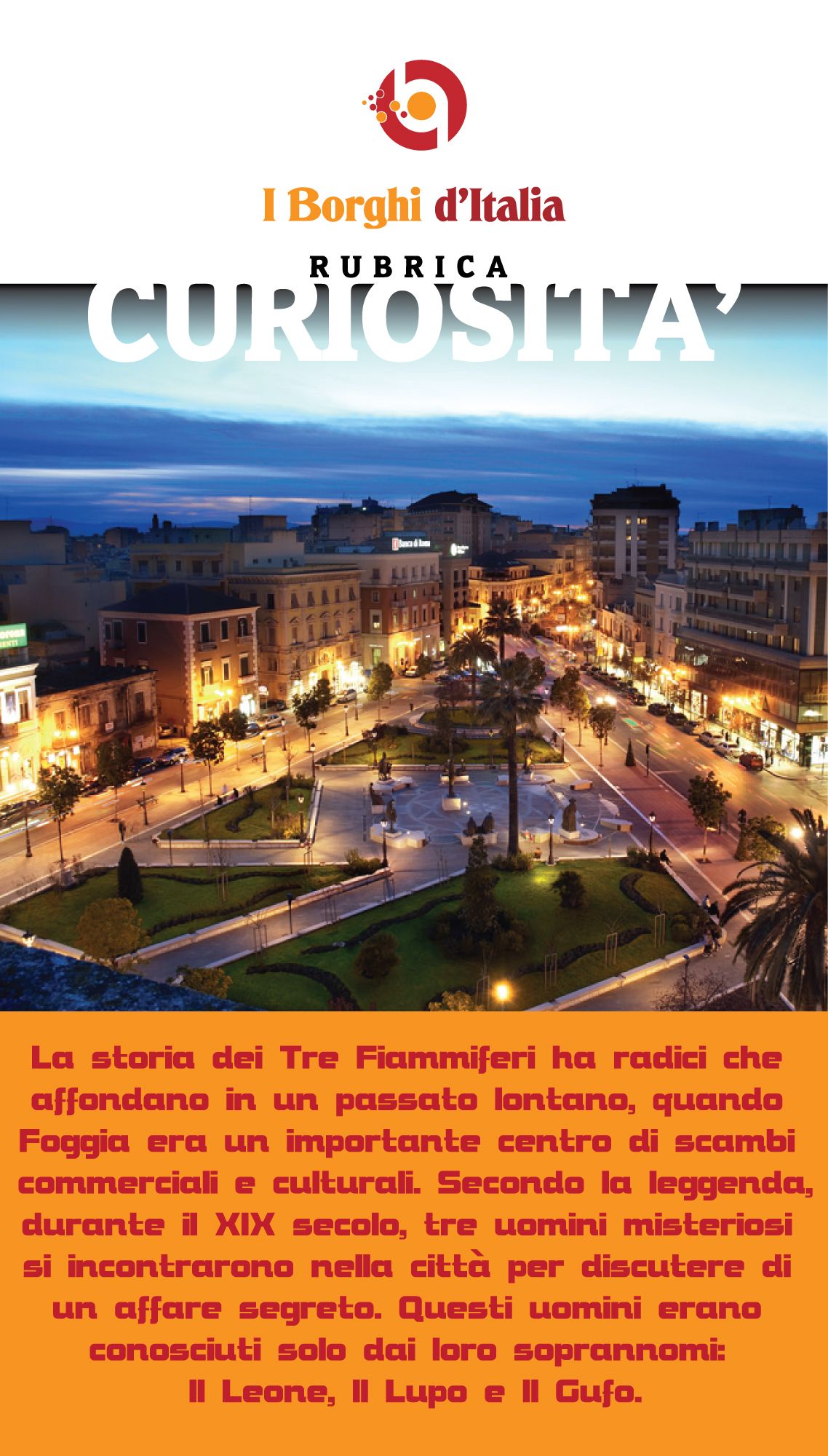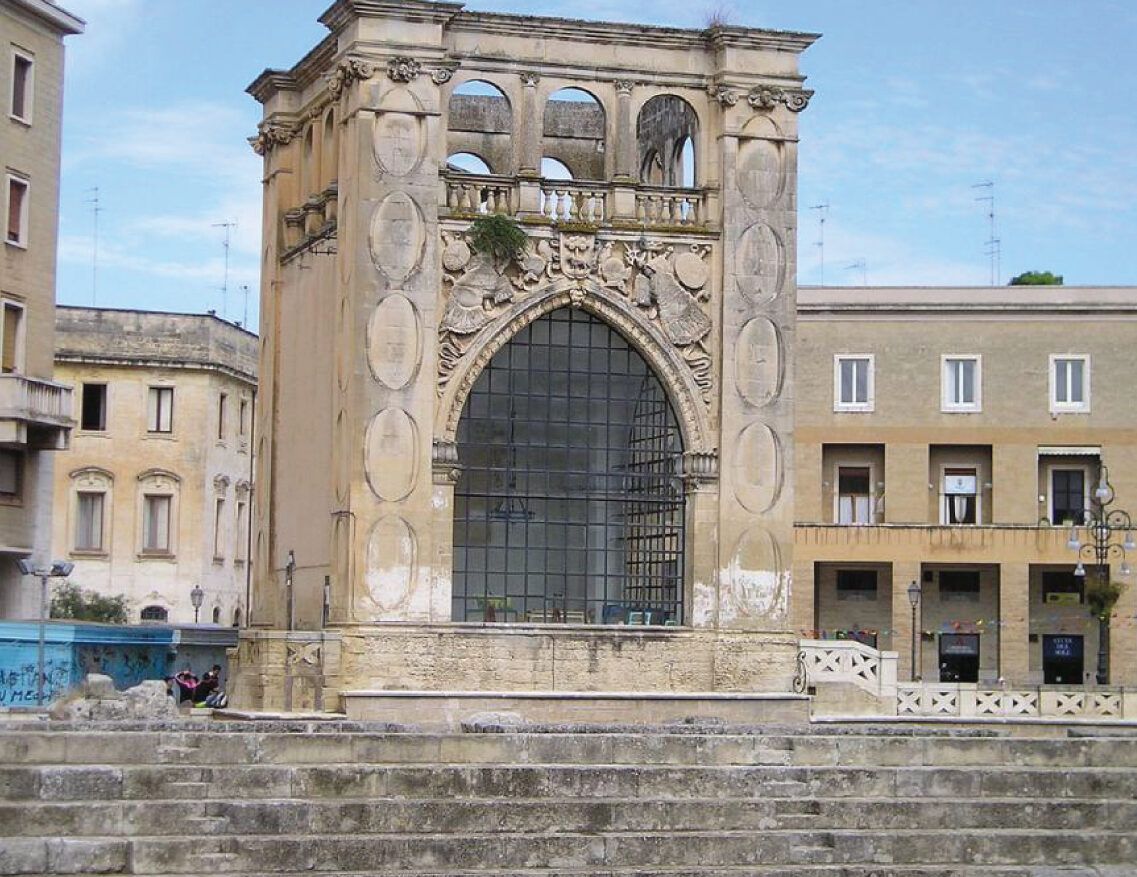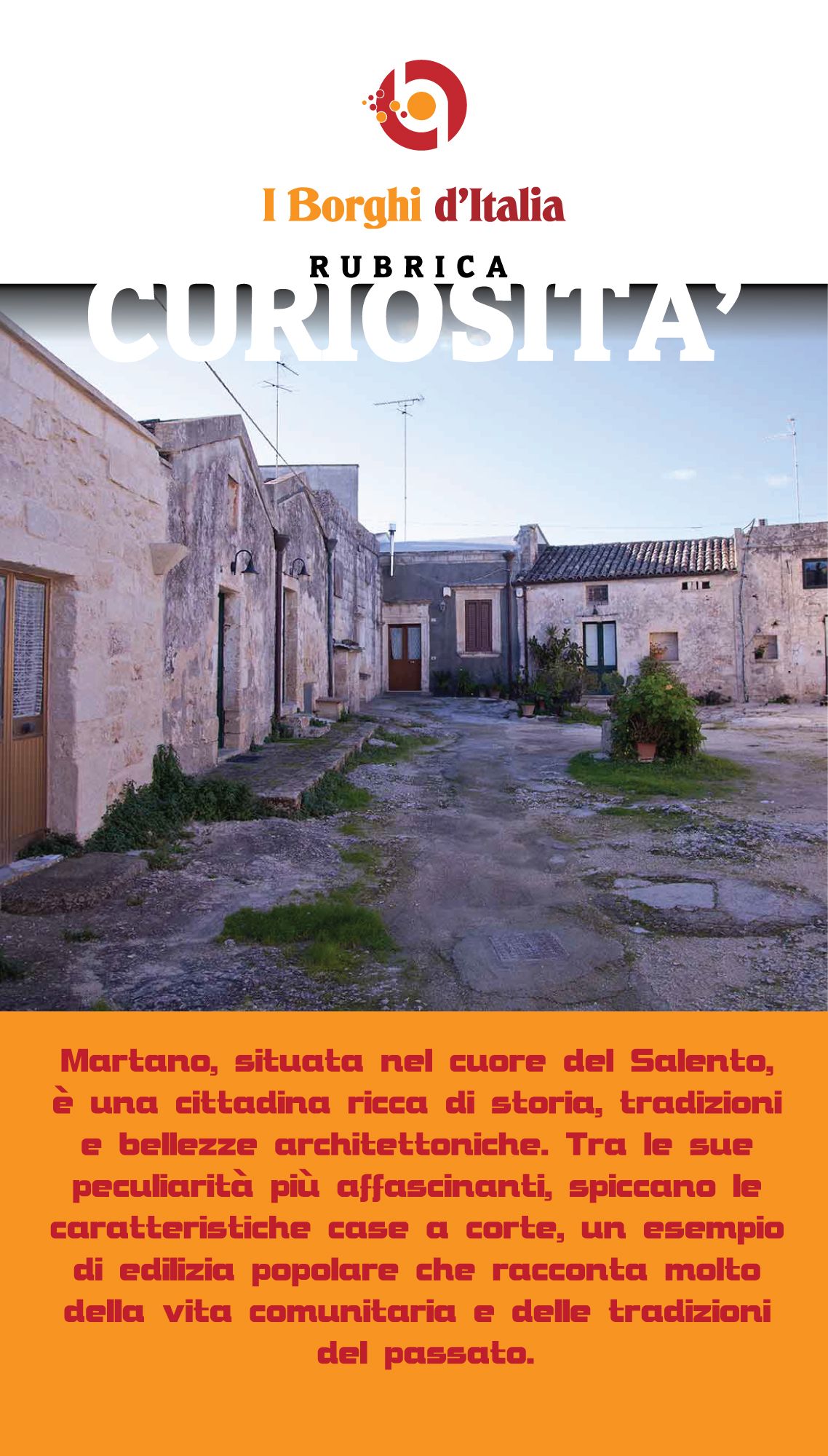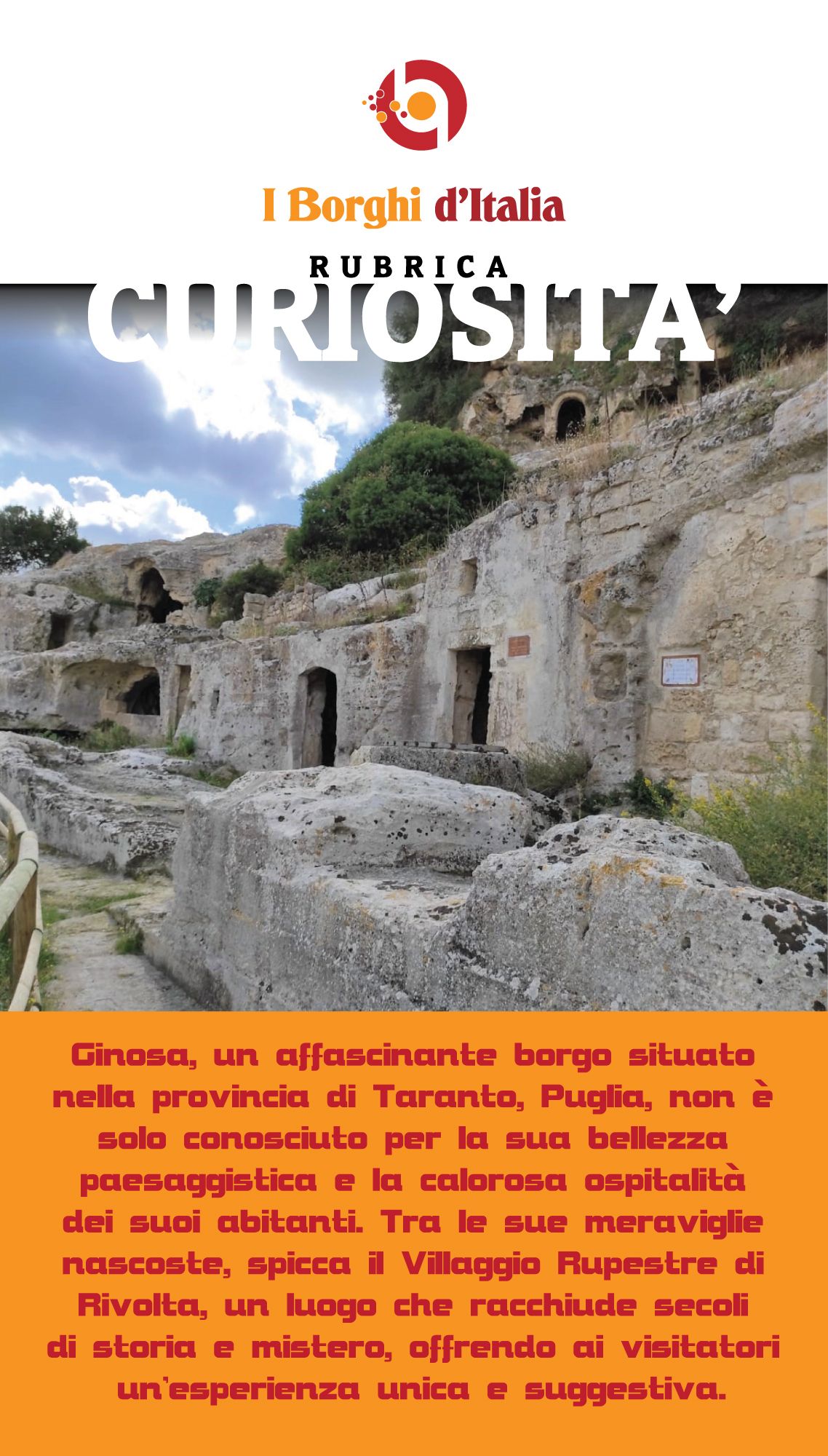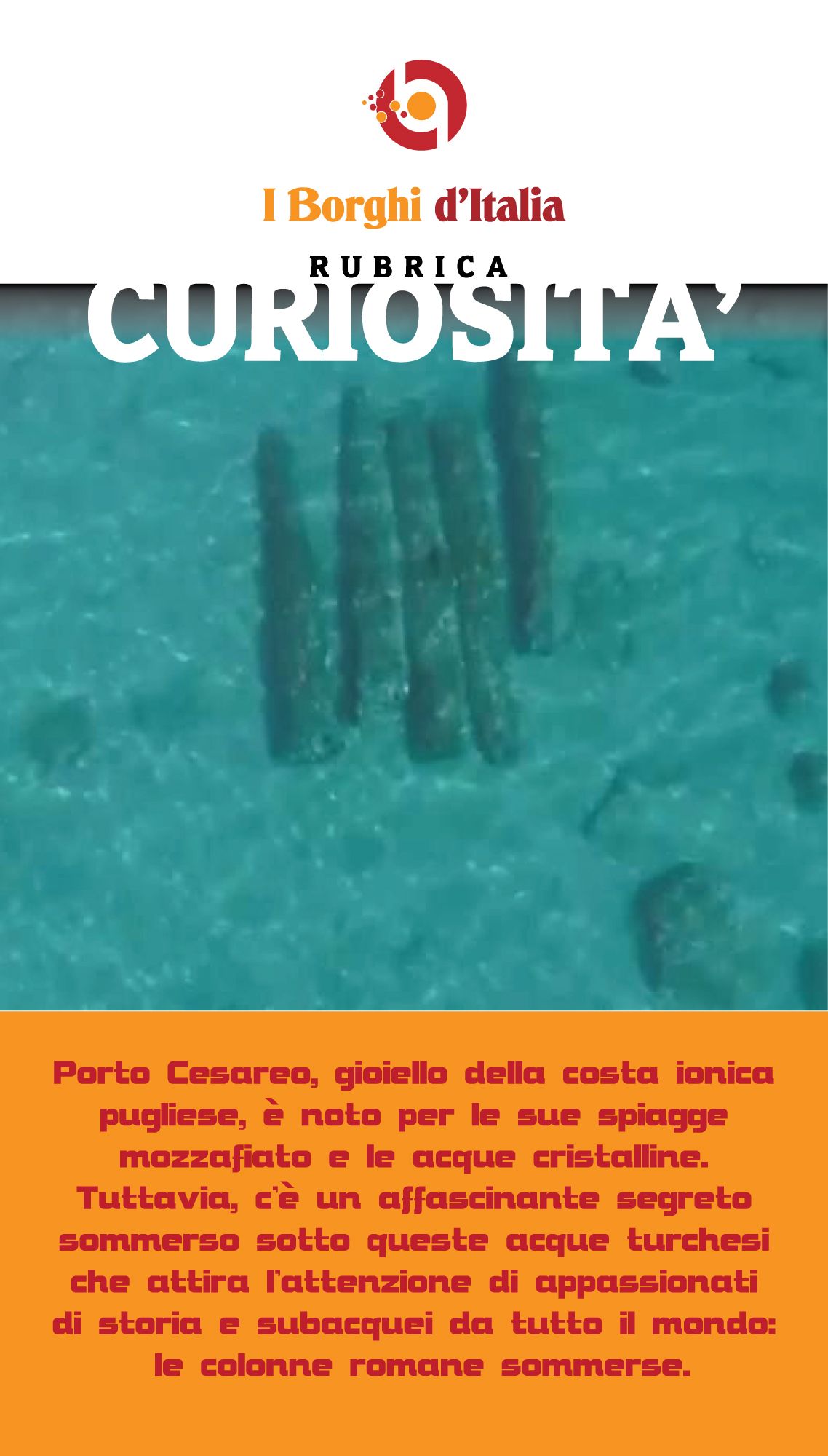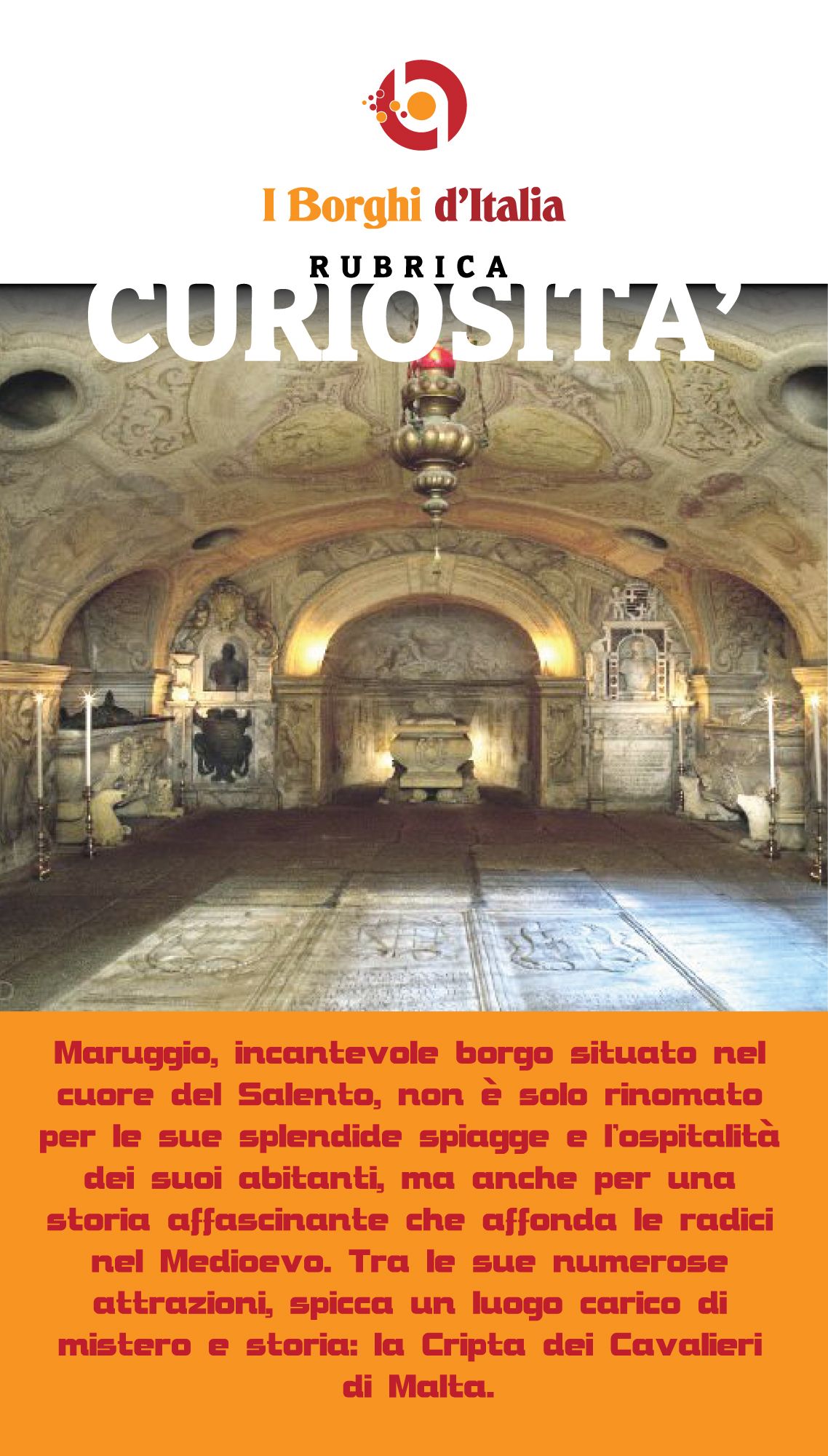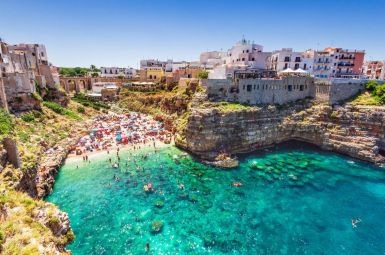
Autore: Editore
Tortona, Piemonte: Una Latitudine da Capogiro che la Lega a Città Iconiche del Mondo
Se c’è un elemento che accomuna un gioiello nascosto del Piemonte come Tortona e metropoli di fama mondiale, è una linea invisibile ma potentissima sulla mappa: la sua latitudine.
Per i nostri lettori de I borghi d’Italia.com, abituati a scoprire storie che vanno oltre la semplice facciata, vi sveliamo una curiosità geografica che eleva Tortona, in provincia di Alessandria, a un piano di illustre compagnia.
Il Filo di Seta Geografico: Tortona e le Capitali del Mondo
Tortona sorge a una latitudine di circa $44^\circ 53’$ Nord. A prima vista, potrebbe sembrare solo un dato tecnico. Tuttavia, quando si traccia questo parallelo ideale attraverso il globo, si scopre che la città piemontese condivide questa “fascia climatica” e astronomica con alcune delle capitali e delle città più celebri e influenti del pianeta.
Immaginate di partire da Tortona e viaggiare verso est lungo questa linea:
- Bucarest (Romania): La capitale rumena, vivace e ricca di storia, si trova quasi esattamente sulla stessa linea parallela.
- Belgrado (Serbia): Un altro grande snodo balcanico che eguaglia la posizione settentrionale di Tortona.
- Minneapolis (Stati Uniti): Attraversando l’Atlantico, la metropoli del Minnesota condivide una latitudine sorprendentemente simile.
- Lione (Francia): La vicina capitale gastronomica francese è anch’essa una co-latitudinaria di Tortona.
Questa vicinanza geografica, sebbene non implichi un clima identico (l’influenza del Mediterraneo è fondamentale per Tortona), suggerisce un’interessante connessione storica e astronomica. Significa che queste città ricevono un’inclinazione solare molto simile, influenzando la durata delle loro giornate e il ciclo delle stagioni, un aspetto che, in passato, era cruciale per l’agricoltura e la vita quotidiana.
Il takeaway? Quando passeggiate tra le vie di Tortona, con lo sguardo rivolto verso l’antico Castello, sappiate che state camminando sullo stesso piano orizzontale di illustri centri urbani globali. Non è forse questo il fascino nascosto di un Borgo d’Italia, capace di dialogare silenziosamente con il mondo intero?
La Curiosità Nascosta di Tortona
C’è un dettaglio poco noto e affascinante sulla storia di Tortona che merita di essere raccontato. Durante l’epoca romana, la città, nota come Dertona, non era semplicemente un insediamento qualunque, ma deteneva un primato logistico fondamentale: era considerata il primo vero capoluogo romano che si incontrava provenendo da Roma e dirigendosi verso l’attuale Pianura Padana, lungo la strategica Via Postumia. Questa posizione la rendeva un centro nevralgico di commercio e di potere militare, un crocevia talmente importante che le valse l’appellativo di Iulia e lo status di Colonia. Questa funzione di Porta della Padania o di Primo Scalo Settentrionale la rese un punto di sosta obbligato e un centro di irradiazione della romanità nel nord, ben prima che Milano o Torino acquisissero la loro successiva importanza. La sua antichissima rilevanza non è solo storica ma è incisa nel tessuto urbano, spesso stratificato sotto le epoche successive.
Rovereto: Il “Trekking Urbano Veneziano” che non ti aspetti in Trentino Alto Adige
Un Inatteso Legame Tra Dolomiti e Laguna
Quando si parla di Rovereto, l’immagine che affiora è spesso legata ai maestosi scenari alpini, alla Grande Guerra e all’imponente Campana dei Caduti. Ma c’è un filo sottile, intessuto nei secoli, che lega questa “Città della Quercia” alle architetture e allo spirito della Serenissima: il Trekking Urbano Veneziano.
Il nostro viaggio nel cuore di Rovereto non è una semplice passeggiata, ma una riscoperta del suo animo nascosto, plasmato da quasi quattro secoli di dominio veneziano (dal 1416 al 1509 e poi ancora tra il 1600 e il 1797, con varie interruzioni). Dimenticate i sentieri di montagna: qui, il passo è scandito dai ciottoli di vicoli che sussurrano storie di mercanti, baili e sete preziose.
🗺️ Alla Scoperta dei Palazzi e delle Logge
Il vero tesoro di Rovereto si cela nel suo centro storico, un dedalo di vie che svelano un’eleganza quasi lagunare. L’itinerario “veneziano” si snoda tra:
- Via della Terra: L’antica spina dorsale della città, una strada stretta e suggestiva dove si affacciano le dimore patrizie che ostentano loggiati, bifore e decorazioni tipiche dell’architettura veneta, spesso riadattate al gusto alpino.
- Piazza San Marco: Il cuore pulsante, inevitabilmente intitolato al patrono di Venezia. Qui, si percepisce l’antico fervore mercantile, con i portici che proteggevano le botteghe e i magazzini di tessuti pregiati (Rovereto fu un centro serico di primaria importanza per la Repubblica).
- Il Castelbarco: Sebbene la sua origine sia medievale, il castello subì modifiche e influenze strategiche durante il periodo veneziano, diventando un baluardo a difesa della via che portava verso il nord.
Il segreto di questo trekking urbano è alzare lo sguardo: i balaustrini in pietra, le cornici marcapiano e gli stemmi araldici sui portoni non lasciano dubbi sulla matrice culturale e stilistica che ha permeato la città. È il perfetto connubio tra l’austera pietra trentina e la grazia formale veneziana.
🎯 Perché Rovereto è l’ideale per l’esploratore di Borghi
Per chi ama scoprire l’Italia meno battuta, Rovereto offre un’esperienza sensoriale e storica completa. Non è solo un borgo “da vedere”, ma un borgo “da vivere” con lentezza, capace di mostrare strati storici inaspettati. Il contrasto tra l’aria fresca alpina e l’eco del lusso orientale (portato dai mercanti veneziani) rende questo luogo unico nel panorama dei Borghi d’Italia. È la prova che la storia non segue confini geografici, ma le rotte del commercio e della cultura.
Curiosità sulla città
La grande campana di Rovereto, la Campana dei Caduti Maria Dolens, è la più grande campana al mondo che suona a distesa. Non è solo un monumento alla pace ma fu realizzata fondendo il bronzo dei cannoni delle nazioni partecipanti al primo conflitto mondiale.
La “Città Gemella” Risorta. La Storia e il Coraggio di un Altopiano Sfigurato e Rifondato
Quando il Cielo si Spense: Il Dramma della Distruzione nella Grande Guerra
C’è un luogo in Veneto, sull’omonimo Altopiano, dove l’aria sa di storia e resilienza: Asiago. Non è solo una meta turistica o la patria di un formaggio iconico; è un monito vivente, il cui profilo attuale è un atto di coraggio e determinazione. Per chi, come me, ha passato decenni a tessere storie di brand e luoghi, Asiago offre una narrazione potentissima, quella della rinascita totale.
Durante la Prima Guerra Mondiale, l’Altopiano dei Sette Comuni divenne il fronte caldo, un inferno di trincee e bombardamenti. E Asiago, in particolare, subì una sorte che le valse l’appellativo, doloroso e significativo, di “Città Gemella”.
L’Appellativo di “Città Gemella”: Un Simbolo della Devastazione
L’espressione “città gemella” (o “città sorella”) non nasce da un patto di amicizia, ma dalla condivisione di una tragedia: la totale rasa al suolo. A seguito della Strafexpedition (la “spedizione punitiva” austriaca del 1916) e dei successivi anni di cruenti scontri, Asiago fu martellata dall’artiglieria pesante. Non si trattò di danni collaterali, ma di una distruzione metodica che ridusse l’abitato a un cumulo di macerie.
- Il Collasso Architettonico: Edifici storici, chiese, la piazza principale… tutto fu spazzato via.
- La Tabula Rasa: L’ambiente stesso, i boschi circostanti, vennero sfigurati al punto da rendere l’Altopiano irriconoscibile.
- La Ricostruzione come Missione: Al termine del conflitto, Asiago non era una città da restaurare, ma da rifondare dalle fondamenta.
Questa condizione di annientamento totale la accomunò tristemente ad altri centri italiani e europei completamente distrutti dal conflitto, diventando un locus simbolico del sacrificio bellico.
La Forza della Pietra: L’Indice di Rinascita
Ciò che rende Asiago un caso di studio (anche dal punto di vista del place branding della resilienza) è il modo in cui ha affrontato la ricostruzione.
- Impegno Collettivo: L’esodo forzato fu seguito da un ritorno caparbio. La popolazione, guidata da un senso di appartenenza incrollabile, si impegnò immediatamente nel recupero.
- Architettura Nuova: La città risorta presenta un impianto urbanistico più ampio e luminoso, figlio di una visione post-bellica, pur mantenendo un richiamo allo stile montano tradizionale.
- Memoria Viva: L’imponente Sacrario Militare di Asiago, che domina il paesaggio, non è solo un monumento ai caduti, ma l’affermazione fisica che, nonostante tutto, la vita e la memoria trionfano sul fango e sulle macerie.
Asiago, la “Città Gemella”, oggi è l’emblema della tenacia veneta e italiana. Camminare tra le sue vie, assaggiare i suoi sapori, ammirare la sua sobria bellezza significa onorare la lezione che ci ha lasciato: anche quando si è rasi al suolo, si può (e si deve) risorgere più forti e con una storia ancora più profonda da raccontare.
Curiosità su Asiago
Durante l’occupazione austro-ungarica in un periodo particolarmente buio della guerra le forze militari nemiche furono costrette a costruire un forno crematorio temporaneo per smaltire i corpi dei caduti in combattimento ma il fumo generato dall’attività era così denso e costante che la popolazione locale lo soprannominò il “camino del diavolo” un nome che sussurrò per anni il terrore e la profonda ferita della guerra.
La Strana Curiosità di Taranto: Il Ponte Girevole
Il Fascino del Ponte Girevole di Taranto
Taranto, conosciuta come la “Città dei Due Mari”, è una località affascinante situata nel sud della Puglia. Famosa per il suo ricco patrimonio storico e culturale, Taranto ospita una delle strutture più uniche e ingegnose d’Italia: il Ponte Girevole.
Un’Opera di Ingegneria Straordinaria
Il Ponte Girevole, ufficialmente noto come Ponte San Francesco di Paola, è una struttura mobile che collega il Borgo Antico con il Borgo Nuovo della città, attraversando il canale navigabile che unisce il Mar Grande al Mar Piccolo. Costruito nel 1887 e successivamente ristrutturato nel 1958, questo ponte è uno dei simboli più riconoscibili di Taranto.
Come Funziona il Ponte Girevole?
La peculiarità del Ponte Girevole è la sua capacità di ruotare su un perno centrale per permettere il passaggio delle navi militari della Marina Italiana e di altre imbarcazioni di grandi dimensioni. Quando una nave deve attraversare il canale, il ponte viene chiuso al traffico stradale e ruotato di 90 gradi, aprendo così un varco sufficientemente ampio per il passaggio.
Un Evento da Non Perdere
La rotazione del Ponte Girevole è un evento affascinante che attira residenti e turisti. Osservare questa imponente struttura in movimento è un’esperienza unica che permette di apprezzare l’ingegnosità e la precisione con cui è stata progettata. La cerimonia di apertura del ponte è particolarmente suggestiva di sera, quando l’illuminazione crea un’atmosfera magica e incantata.
Un Simbolo di Innovazione e Tradizione
Il Ponte Girevole di Taranto rappresenta perfettamente l’incontro tra innovazione e tradizione. Sebbene sia una struttura moderna, il ponte si integra perfettamente con il paesaggio storico della città, unendo due parti di Taranto con un gesto che è diventato un rituale quotidiano.
Storia e Leggende
Oltre alla sua funzionalità pratica, il Ponte Girevole è circondato da storie e leggende che ne accrescono il fascino. Una delle più popolari narra che il ponte sia stato costruito su un antico passaggio segreto utilizzato dai tarantini per sfuggire agli attacchi dei pirati. Altri racconti parlano di apparizioni misteriose durante le notti di nebbia, aggiungendo un tocco di mistero alla struttura.
Un’Esperienza Unica
Visitare Taranto e assistere all’apertura del Ponte Girevole è un’esperienza che non si dimentica facilmente. Questo capolavoro di ingegneria non solo serve una funzione pratica, ma è anche una testimonianza della creatività e dell’abilità tecnica degli ingegneri italiani.
Conclusione
Taranto è una città ricca di meraviglie e curiosità, e il Ponte Girevole è senza dubbio una delle più straordinarie. Che tu sia un appassionato di ingegneria, un amante della storia o semplicemente un curioso viaggiatore, non perdere l’occasione di ammirare questa incredibile struttura in movimento.
Scopri di Più
Per ulteriori informazioni su Taranto e le sue affascinanti attrazioni, continua a seguirci e scopri altre curiosità e segreti nascosti di questa affascinante città pugliese.
Tricase Porto. Una pittoresca località marina situata nel Salento
Tricase Porto è una piccola e pittoresca località marina situata nel Salento, nella provincia di Lecce, Puglia. Una curiosità affascinante su Tricase Porto riguarda il “Quercia Vallonea,” un albero secolare che rappresenta un vero e proprio monumento naturale.
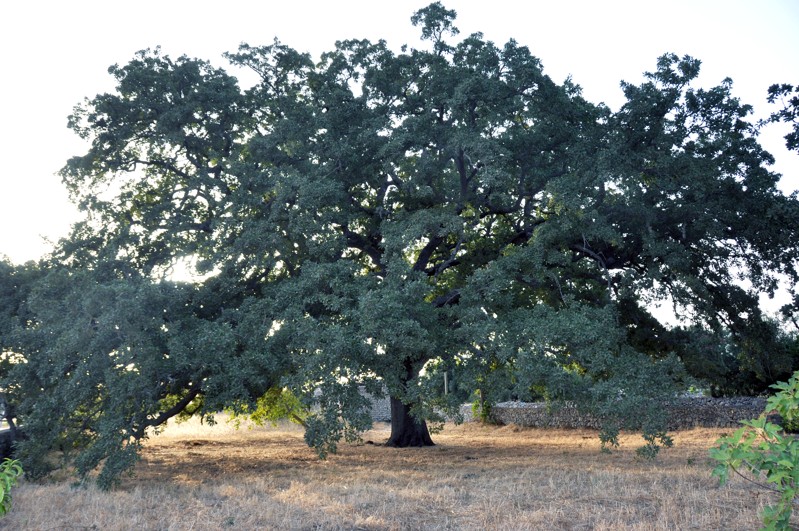
La Quercia Vallonea di Tricase
- Specie Rara: La Quercia Vallonea (Quercus ithaburensis subsp. macrolepis) è una specie rara di quercia, e l’esemplare di Tricase Porto è uno dei più antichi e maestosi d’Italia.
- Età e Dimensioni: Quest’albero ha un’età stimata di circa 700 anni. Ha una circonferenza del tronco di circa 4,25 metri e un’altezza di circa 20 metri, con una chioma che si estende per oltre 25 metri di diametro.
- Storia e Tradizioni: Secondo la leggenda locale, la Quercia Vallonea fu piantata dai monaci Basiliani intorno al XIII secolo. Questo albero ha visto passare secoli di storia e ha fornito ombra e rifugio a generazioni di abitanti e viaggiatori.
Importanza Culturale e Ambientale
- Simbolo di Resilienza: La Quercia Vallonea è considerata un simbolo di resilienza e longevità. La sua presenza millenaria rappresenta un legame tangibile con il passato e una testimonianza della capacità della natura di sopravvivere e prosperare.
- Conservazione: È un albero protetto e curato con attenzione per garantirne la sopravvivenza per le future generazioni. Questo include interventi di manutenzione periodica e misure di protezione contro agenti esterni dannosi.
- Attrazione Turistica: La Quercia Vallonea è un’importante attrazione turistica per Tricase Porto. Visitatori e turisti vengono per ammirare la sua maestosità e per conoscere la sua storia. L’albero è anche un luogo di ritrovo per eventi culturali e manifestazioni locali.
Un Monumento Naturale
La Quercia Vallonea di Tricase non è solo un albero, ma un vero e proprio monumento naturale. La sua presenza aggiunge un fascino particolare a Tricase Porto, rendendo questa località non solo un bel posto per godersi il mare, ma anche un luogo di grande valore storico e ambientale.
Visitarla significa fare un viaggio indietro nel tempo, apprezzando la straordinaria longevità e bellezza di uno degli alberi più antichi d’Italia.
Lecce, la Firenze del Sud
Curiosità: La provincia di Lecce è rinomata per la sua architettura barocca unica, ma un fatto poco noto è che Lecce è anche conosciuta come la “Firenze del Sud” per il suo ricco patrimonio artistico e culturale. Il Barocco leccese è caratterizzato dall’uso della pietra locale, una pietra calcarea morbida e facilmente lavorabile, che gli artigiani del XVII secolo hanno scolpito in intricate facciate di chiese e palazzi. Questo stile unico è particolarmente visibile nella Basilica di Santa Croce, che è un vero capolavoro di sculture dettagliate, ornamenti floreali e figure mitologiche, attirando ammiratori e studiosi da tutto il mondo.
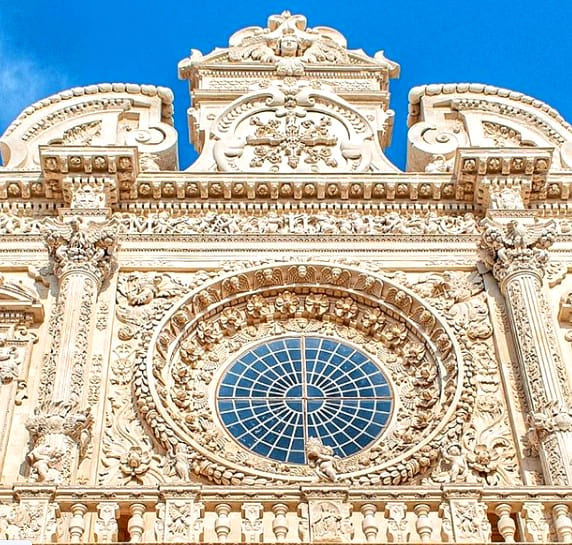
Benvenuti alla pagina dedicata alla Basilica di Santa Croce di Lecce, uno dei gioielli del barocco leccese e un capolavoro architettonico che incanta visitatori da tutto il mondo. Situata nel cuore del centro storico di Lecce, questa basilica rappresenta una testimonianza straordinaria della maestria e dell’arte del XVII secolo.
Storia
La costruzione della Basilica di Santa Croce iniziò nel 1549 e si concluse nel 1695, attraversando più di un secolo di lavori durante i quali si alternarono diversi architetti e maestri scalpellini. L’edificio è stato progettato e costruito sotto la supervisione di tre grandi architetti: Gabriele Riccardi, Francesco Antonio Zimbalo, e Cesare Penna.
La basilica fu eretta su commissione dell’Ordine dei Celestini e doveva essere il loro luogo di culto principale. La costruzione della basilica avvenne in due fasi principali: la prima riguardò la parte inferiore della facciata, e la seconda, iniziata nel 1606, riguardò la parte superiore e la splendida decorazione della facciata.
Architettura
Facciata
La facciata della Basilica di Santa Croce è uno degli esempi più straordinari del barocco leccese. È divisa in tre parti principali:
- Parte Inferiore: Caratterizzata da sei colonne corinzie che sorreggono un architrave decorato con motivi vegetali e figure allegoriche.
- Rosone: La parte centrale della facciata è dominata da un magnifico rosone, incorniciato da una decorazione ricca di elementi naturalistici, animali fantastici e putti. Il rosone è un vero capolavoro di scultura barocca.
- Parte Superiore: La parte superiore della facciata presenta una balaustra con tredici statue di santi e una ricca decorazione scultorea. Le statue rappresentano figure religiose e personaggi allegorici.
Interno
L’interno della basilica, a croce latina, è altrettanto affascinante, sebbene meno decorato rispetto all’esterno. La navata centrale è affiancata da due navate laterali e presenta una serie di cappelle laterali riccamente decorate. Il soffitto ligneo è ornato con affreschi che rappresentano scene bibliche e figure di santi.
Uno degli elementi più suggestivi all’interno della basilica è l’altare maggiore, magnificamente scolpito e decorato con rilievi raffiguranti episodi della vita di Cristo e dei santi.
Chiostro dei Celestini
Adiacente alla basilica si trova il Chiostro dei Celestini, un’altra meraviglia del barocco leccese. Questo chiostro, ora parte del Palazzo del Governo, è decorato con arcate e colonne eleganti e ospita un giardino centrale.
Curiosità
- Simbolismo: La decorazione della basilica è ricca di simbolismi religiosi e allegorici, che riflettono la cultura e le credenze dell’epoca.
- Restauri: Nel corso dei secoli, la basilica ha subito diversi restauri, l’ultimo dei quali ha riportato alla luce la bellezza originaria delle sue decorazioni.
- Patrimonio UNESCO: Lecce, con i suoi numerosi edifici barocchi tra cui la Basilica di Santa Croce, è candidata a diventare Patrimonio dell’Umanità UNESCO.
Visitare la Basilica
La Basilica di Santa Croce è aperta al pubblico e rappresenta una tappa imperdibile per chi visita Lecce. È possibile partecipare a visite guidate che offrono approfondimenti sulla storia, l’architettura e le curiosità della basilica.
Orari di Apertura
- Lunedì – Sabato: 9:00 – 19:00
- Domenica e Festivi: 10:00 – 18:00
Informazioni
- Indirizzo: Via Umberto I, 1, 73100 Lecce LE, Italia
- Telefono: +39 0832 241957
- Email: info@santacrocelecce.it
- Sito Web: santacrocelecce.it
Conclusione
La Basilica di Santa Croce è più di un luogo di culto; è un monumento storico e artistico che racconta secoli di storia e tradizioni. Visitare questa basilica significa immergersi nella bellezza del barocco leccese e scoprire un patrimonio culturale unico.
La Strana Curiosità di Foggia: Il Mistero dei Tre Fiammiferi
Il Fascino e il Mistero dei Tre Fiammiferi di Foggia
Foggia, una città ricca di storia e tradizioni, nasconde tra le sue vie e piazze un aneddoto affascinante e misterioso che pochi conoscono: la leggenda dei Tre Fiammiferi.
Un Racconto di Intrighi e Segreti
La storia dei Tre Fiammiferi ha radici che affondano in un passato lontano, quando Foggia era un importante centro di scambi commerciali e culturali. Secondo la leggenda, durante il XIX secolo, tre uomini misteriosi si incontrarono nella città per discutere di un affare segreto. Questi uomini erano conosciuti solo dai loro soprannomi: Il Leone, Il Lupo e Il Gufo.
Il Significato dei Tre Fiammiferi
Si narra che durante la loro riunione, i tre uomini accesero tre fiammiferi, uno dopo l’altro, e li utilizzarono per illuminare un documento segreto che avrebbero firmato. La leggenda vuole che quei fiammiferi simboleggiassero un patto di alleanza tra loro, uniti per realizzare un grande progetto di cui nessuno, a parte loro, conosceva i dettagli.
La Scomparsa Misteriosa
Dopo quell’incontro, i tre uomini scomparvero misteriosamente, e nessuno seppe più nulla di loro. Da allora, si dice che i foggiani abbiano iniziato a vedere tre fiammiferi accesi insieme come un segno di cattivo presagio. La storia si è tramandata di generazione in generazione, arricchendosi di particolari sempre più misteriosi e affascinanti.
I Tre Fiammiferi nella Cultura Popolare
La leggenda dei Tre Fiammiferi è ancora oggi presente nella cultura popolare di Foggia. In alcune vecchie osterie della città, gli anziani raccontano questa storia ai più giovani, mantenendo viva una tradizione orale che affascina e incuriosisce. Anche alcuni artisti locali hanno tratto ispirazione da questa leggenda, creando opere che richiamano i tre misteriosi fiammiferi.
Un Simbolo di Mistero
Oltre a essere un racconto affascinante, la storia dei Tre Fiammiferi rappresenta un simbolo di mistero che avvolge la città di Foggia. È un esempio di come le leggende possano influenzare la cultura e le tradizioni di una comunità, lasciando un’impronta indelebile nella memoria collettiva.
Conclusione
La leggenda dei Tre Fiammiferi di Foggia è una delle tante curiosità che rendono questa città pugliese un luogo ricco di fascino e mistero. Che tu sia un appassionato di storie antiche, un amante del mistero o semplicemente un curioso viaggiatore, questa leggenda aggiunge un ulteriore strato di interesse alla tua visita a Foggia.
Scopri di Più
Per scoprire altre curiosità e segreti nascosti di Foggia e della Puglia, continua a seguirci. Ogni angolo di questa affascinante regione ha una storia da raccontare, e noi siamo qui per svelarle tutte.
Una curiosa particolarità di Lecce: il mistero del sedile.
Un Tuffo nel Mistero del Sedile di Lecce
Lecce, conosciuta come la “Firenze del Sud”, è famosa per il suo ricco patrimonio barocco, le affascinanti chiese e i maestosi palazzi. Tuttavia, tra le tante meraviglie architettoniche, una curiosità particolarmente intrigante si cela in pieno centro storico: il misterioso Sedile di Lecce.
Il Sedile di Lecce: Un Monumento Unico
Il Sedile, noto anche come Palazzo del Seggio, è una struttura imponente situata in Piazza Sant’Oronzo, il cuore pulsante di Lecce. Costruito nel 1592, questo edificio è stato nel corso dei secoli un luogo di amministrazione e di giustizia, ma c’è un aspetto che lo rende davvero singolare e affascinante: i misteriosi simboli incisi sulle sue pareti.
I Simboli Enigmatici
Sulle mura del Sedile si possono osservare una serie di simboli e incisioni che, per molti anni, hanno suscitato la curiosità di storici e appassionati di esoterismo. Tra questi simboli, il più intrigante è senza dubbio l’incisione di un uomo con la testa di cane, nota come “Cinocefalo”. Questo simbolo ha dato origine a numerose leggende e teorie.
Il Significato del Cinocefalo
Il simbolo del Cinocefalo, presente sul Sedile di Lecce, è avvolto nel mistero. Alcuni studiosi ritengono che possa rappresentare San Cristoforo, il santo che, secondo alcune tradizioni, era raffigurato con la testa di cane. Altri ipotizzano che l’incisione possa essere un riferimento a simboli pagani o a culti esoterici legati ai Cavalieri Templari, che avevano una forte presenza in Puglia durante il Medioevo.
Le Teorie e le Leggende
Tra le tante teorie, una delle più affascinanti suggerisce che il Sedile di Lecce sia stato costruito su un antico luogo di culto pagano, e che i simboli misteriosi siano una sorta di “protezione” contro gli spiriti maligni. Secondo un’altra leggenda, le incisioni rappresentano un codice segreto lasciato dai Templari per indicare un tesoro nascosto.
Un’Esperienza da Vivere
Per i visitatori di Lecce, il Sedile offre un’esperienza unica. Passeggiare intorno a questo monumento e osservare da vicino i simboli enigmatici è come fare un viaggio nel tempo, immergendosi in un’atmosfera carica di storia e mistero. Ogni dettaglio del Sedile racconta una storia, e ogni simbolo incide un enigma che invita alla riflessione e alla scoperta.
Conclusione
Lecce è una città che non smette mai di stupire, e il Sedile con i suoi misteriosi simboli è una delle curiosità più affascinanti che questo luogo ha da offrire. Che tu sia un appassionato di storia, un amante del mistero, o semplicemente un curioso viaggiatore, non perdere l’occasione di esplorare il Sedile e lasciarti affascinare dai suoi enigmi.
Scopri di Più
Per approfondire la tua conoscenza su Lecce e le sue meraviglie, continua a seguirci e scopri altre curiosità e segreti nascosti di questa splendida città barocca.
Il Segreto delle Case a Corte di Martano
Una Curiosità su Martano: Le Case a Corte
Martano, situata nel cuore del Salento, è una cittadina ricca di storia, tradizioni e bellezze architettoniche. Tra le sue peculiarità più affascinanti, spiccano le caratteristiche case a corte, un esempio di edilizia popolare che racconta molto della vita comunitaria e delle tradizioni del passato.
Un Viaggio nel Passato
Le case a corte sono un tipo di abitazione tradizionale che risale all’epoca medievale. Questo particolare stile architettonico è stato sviluppato per favorire la vita in comunità e rappresenta un vero e proprio microcosmo sociale. A Martano, passeggiando per le vie del centro storico, è possibile ammirare numerosi esempi di queste costruzioni, che ancora oggi emanano un fascino unico.
La Struttura delle Case a Corte
Una casa a corte è generalmente composta da una serie di abitazioni che si affacciano su un cortile comune. Questo spazio centrale fungeva da luogo di incontro, lavoro e socializzazione per le famiglie che vi abitavano. Le abitazioni erano spesso modeste, ma il cortile rappresentava il cuore pulsante della vita quotidiana, dove si svolgevano attività come la lavorazione dei prodotti agricoli, la cura degli animali domestici e le feste comunitarie.
Una Tradizione Che Vive
Ancora oggi, le case a corte di Martano sono testimonianza di un modo di vivere basato sulla condivisione e sul mutuo aiuto. Alcune di queste case sono state restaurate e conservate, mantenendo intatto il loro fascino antico. Alcune sono state trasformate in residenze turistiche, offrendo ai visitatori l’opportunità di sperimentare la vita tradizionale salentina in un contesto autentico.
Martano Oggi
Oltre alle case a corte, Martano offre numerose altre attrazioni. Il centro storico è ricco di edifici storici, chiese barocche e monumenti che raccontano la lunga storia della città. Il territorio circostante, caratterizzato da uliveti secolari e muretti a secco, invita a rilassanti passeggiate e escursioni. Inoltre, Martano è famosa per le sue sagre e feste popolari, dove è possibile assaporare la cucina tradizionale salentina e partecipare a eventi folkloristici.
Un’Esperienza Autentica
Esplorare Martano significa immergersi in un luogo dove la storia e le tradizioni sono ancora vive e palpabili. Che tu sia un appassionato di architettura, un amante delle tradizioni o semplicemente in cerca di una nuova avventura, Martano ha qualcosa di speciale da offrire.
Conclusione
Le case a corte rappresentano uno dei tesori nascosti di Martano, un borgo che sa come affascinare e sorprendere chiunque lo visiti. Non perdere l’occasione di scoprire questo angolo autentico del Salento, dove ogni visita si trasforma in un viaggio nel tempo e nello spazio.
Ti aspettiamo a Martano per vivere un’esperienza unica e indimenticabile tra storia, tradizioni e autenticità!
Il Fascino del Villaggio Rupestre di Rivolta
Una Curiosità su Ginosa: Il Villaggio Rupestre di Rivolta
Ginosa, un affascinante borgo situato nella provincia di Taranto, Puglia, non è solo conosciuto per la sua bellezza paesaggistica e la calorosa ospitalità dei suoi abitanti. Tra le sue meraviglie nascoste, spicca il Villaggio Rupestre di Rivolta, un luogo che racchiude secoli di storia e mistero, offrendo ai visitatori un’esperienza unica e suggestiva.
Un Viaggio nel Tempo
Il Villaggio Rupestre di Rivolta risale all’epoca medioevale ed è composto da una serie di abitazioni scavate direttamente nella roccia. Queste grotte, utilizzate come abitazioni, luoghi di culto e rifugi, offrono uno straordinario esempio di come le comunità locali vivevano in armonia con la natura, sfruttando le risorse disponibili per creare un ambiente abitabile.
La Scoperta del Villaggio
Negli anni ’60, una serie di esplorazioni archeologiche portò alla luce questo incredibile villaggio rupestre. Le grotte di Rivolta, molte delle quali sono state restaurate e rese accessibili, mostrano ancora oggi tracce di affreschi, utensili e strutture che raccontano la vita quotidiana e le tradizioni degli antichi abitanti di Ginosa.
Un’Esperienza Suggestiva
Visitare il Villaggio Rupestre di Rivolta è come fare un salto indietro nel tempo. Mentre ti aggiri tra le grotte, puoi immaginare la vita dei suoi abitanti, le loro attività quotidiane e le storie che si celano dietro ogni angolo. Le guide locali offrono tour dettagliati, arricchiti da aneddoti storici e curiosità, rendendo la visita ancora più coinvolgente.
Ginosa Oggi
Oltre al villaggio rupestre, Ginosa offre numerose altre attrazioni. Il suo centro storico, con le sue chiese barocche e le strette vie acciottolate, è perfetto per una passeggiata. Le campagne circostanti, ricche di uliveti e vigneti, invitano a scoprire i prodotti tipici del territorio, tra cui l’olio d’oliva e i vini pregiati. E non dimentichiamo la vicinanza al mare, con le bellissime spiagge della costa ionica a breve distanza.
Un’Esperienza Indimenticabile
Esplorare Ginosa significa immergersi in un luogo dove la storia e la natura si intrecciano in un connubio perfetto. Che tu sia un appassionato di archeologia, un amante della natura o semplicemente in cerca di un’esperienza autentica, Ginosa ha qualcosa di speciale da offrire.
Conclusione
Il Villaggio Rupestre di Rivolta è solo uno dei tanti tesori nascosti di Ginosa, un borgo che sa come affascinare e sorprendere chiunque lo visiti. Non perdere l’occasione di scoprire questo angolo magico della Puglia, dove ogni visita si trasforma in un viaggio nel tempo e nello spazio.
Ti aspettiamo a Ginosa per vivere un’esperienza unica e indimenticabile tra storia, natura e tradizioni!
Porto Cesareo: Il Mistero delle Colonne Romane Sott’Acqua
Una Curiosità su Porto Cesareo: Le Colonne Romane Sott’acqua
Porto Cesareo, gioiello della costa ionica pugliese, è noto per le sue spiagge mozzafiato e le acque cristalline. Tuttavia, c’è un affascinante segreto sommerso sotto queste acque turchesi che attira l’attenzione di appassionati di storia e subacquei da tutto il mondo: le colonne romane sommerse.
Un Tuffo nella Storia
Porto Cesareo, un tempo importante porto romano, conserva sotto il suo mare tracce di un glorioso passato. Risalenti all’epoca romana, queste colonne di marmo rappresentano uno dei reperti archeologici subacquei più affascinanti della zona. La loro presenza testimonia l’importanza commerciale e strategica di Porto Cesareo durante l’antichità.
La Scoperta delle Colonne
Le colonne furono scoperte casualmente negli anni ’60 da alcuni pescatori locali. Immerse nelle acque poco profonde di Torre Chianca, sono visibili anche con una semplice maschera e boccaglio. Le colonne, lunghe circa 9 metri e con un diametro di 70 centimetri, sono ben conservate e offrono uno spettacolo suggestivo ai subacquei e agli appassionati di snorkeling.
Un’Esperienza Subacquea Unica
Per chi desidera vivere un’avventura unica, esplorare le colonne romane di Porto Cesareo è un’esperienza indimenticabile. Accompagnati da guide esperte, i visitatori possono immergersi nelle acque cristalline e avvicinarsi a questi straordinari reperti. La sensazione di nuotare accanto a testimonianze di un’epoca lontana è qualcosa che rimane nel cuore e nella memoria.
Porto Cesareo Oggi
Oltre alle sue meraviglie sommerse, Porto Cesareo offre un’ampia gamma di attrazioni turistiche. Le sue spiagge, come Punta Prosciutto e Torre Lapillo, sono considerate tra le più belle d’Italia. Il centro storico, con i suoi ristoranti e negozi tipici, è il luogo ideale per una passeggiata serale. La cucina locale, ricca di piatti a base di pesce fresco e frutti di mare, delizierà i palati di tutti i visitatori.
Un’Esperienza Indimenticabile
Esplorare Porto Cesareo significa immergersi in un luogo dove la storia e la bellezza naturale si fondono armoniosamente. Che tu sia un appassionato di archeologia subacquea, un amante delle spiagge paradisiache o semplicemente in cerca di una nuova avventura, Porto Cesareo ha qualcosa di speciale da offrire.
Conclusione
Le colonne romane sommerse sono solo uno dei tanti tesori nascosti di Porto Cesareo, un luogo che sa come affascinare e sorprendere chiunque lo visiti. Non perdere l’occasione di scoprire questo angolo magico della Puglia, dove ogni visita si trasforma in un viaggio nel tempo e nello spazio.
Ti aspettiamo a Porto Cesareo per vivere un’esperienza unica e indimenticabile tra storia, mare e tradizioni!
Maruggio: Il Segreto della Cripta dei Cavalieri di Malta
Una Curiosità su Maruggio: La Cripta dei Cavalieri di Malta
Maruggio, incantevole borgo situato nel cuore del Salento, non è solo rinomato per le sue splendide spiagge e l’ospitalità dei suoi abitanti, ma anche per una storia affascinante che affonda le radici nel Medioevo. Tra le sue numerose attrazioni, spicca un luogo carico di mistero e storia: la Cripta dei Cavalieri di Malta.
Un Tuffo nella Storia
Il borgo di Maruggio, fondato nel X secolo, divenne un importante feudo dei Cavalieri di Malta nel XIII secolo. Questi cavalieri, noti anche come Ospitalieri, erano un ordine monastico-militare dedito alla protezione dei pellegrini e alla cura degli infermi. Maruggio fu uno dei principali centri dell’ordine nel Salento, lasciando un’impronta indelebile nella storia e nell’architettura locale.
La Cripta dei Cavalieri di Malta
Tra i vari edifici storici di Maruggio, la Cripta dei Cavalieri di Malta è senza dubbio uno dei più affascinanti. Situata sotto la Chiesa Matrice, questa cripta è un luogo di sepoltura e raccoglimento per i membri dell’ordine. All’interno, si possono ammirare antiche tombe e affreschi che raccontano la storia e le gesta dei cavalieri. L’atmosfera suggestiva e il fascino storico rendono la cripta una tappa imperdibile per chi visita Maruggio.
Una Scoperta Avvincente
Per chi ama la storia e il mistero, la visita alla Cripta dei Cavalieri di Malta è un’esperienza avvincente. Ogni angolo di questo luogo sembra sussurrare storie di tempi passati, di valorosi cavalieri e di antiche tradizioni. Grazie a recenti lavori di restauro, la cripta è ora accessibile ai visitatori, permettendo a tutti di scoprire questo tesoro nascosto.
Maruggio Oggi
Oltre alla cripta, Maruggio offre un’ampia gamma di attrazioni turistiche. Le sue spiagge, come Campomarino, sono famose per le acque cristalline e la sabbia dorata. Il centro storico, con le sue stradine strette e i palazzi antichi, è ideale per una passeggiata alla scoperta delle tradizioni locali. Inoltre, la cucina maruggese, ricca di piatti a base di pesce fresco e prodotti tipici del Salento, delizierà i palati di tutti i visitatori.
Un’Esperienza Indimenticabile
Esplorare Maruggio significa immergersi in un luogo dove la storia e la bellezza naturale si incontrano in un perfetto equilibrio. Che tu sia un appassionato di storia, un amante del mare o semplicemente in cerca di una nuova avventura, Maruggio ha qualcosa di speciale da offrire.
Conclusione
La Cripta dei Cavalieri di Malta è solo uno dei tanti tesori nascosti di Maruggio, un borgo che sa come affascinare e sorprendere chiunque lo visiti. Non perdere l’occasione di scoprire questo angolo magico del Salento, dove ogni visita si trasforma in un viaggio nel tempo e nello spazio.
Ti aspettiamo a Maruggio per vivere un’esperienza unica e indimenticabile tra storia, mare e tradizioni!
